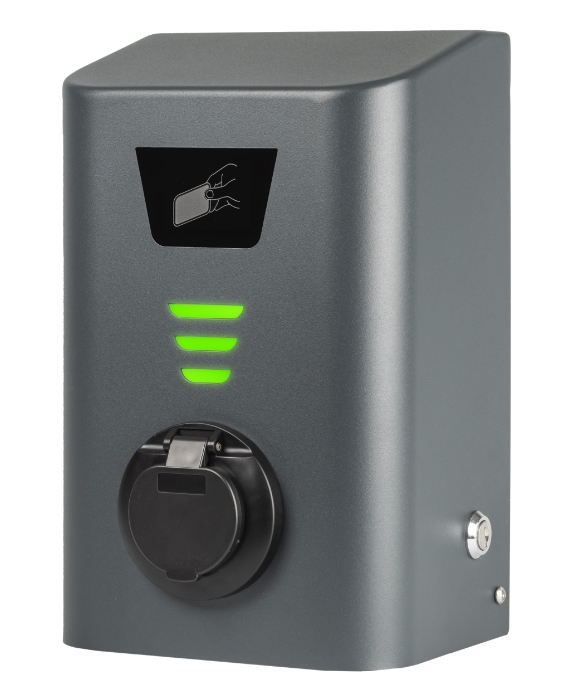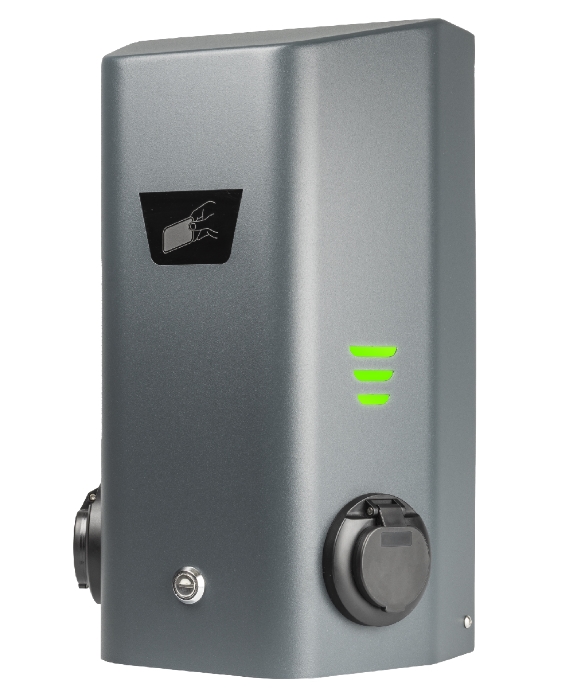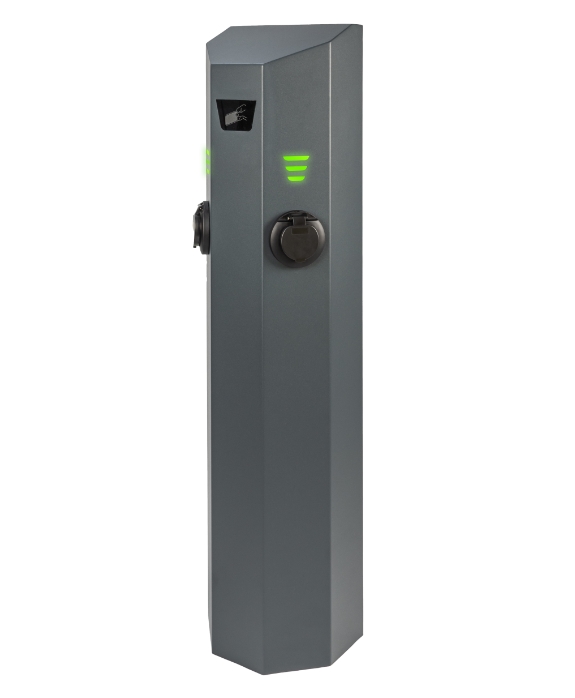Driving the energy transition
View our Charge PointsOur Products
Charge Points
See ChargersCharge Cards
See Charge CardsOur Customers





Popular Chargers
Neon Premium
Our 1-socket wall-mounted smart charger
Platinum
Our sturdy 2-socket free-standing smart charger
Manufacturer Compatibility
























What our customers say
 Our customers are very satisfied with the approach...
Our customers are very satisfied with the approach...
 Easy access to their team and quick response...
Easy access to their team and quick response...
 The support of Chargepoint Europe is excellent...
The support of Chargepoint Europe is excellent...
 Chargepoint is a full service partner...
Chargepoint is a full service partner...
Frequently asked questions
How can I finance my electric vehicle charge points?
We provide several payment options for your charge points.
- If you pay up front, you immediately become the owner of the electric vehicle charge points. This option is usually the best choice for businesses that put the charge points on their balance sheet. If you apply for green subsidies or electric vehicle grants from the council or local government, or for tax deductions, it is usually a requirement to own your own vehicle charging equipment.
- Would you rather pay a monthly fee for your electric vehicle charge points instead of paying for everything up front? You can rent your charge points from us. Chargepoint Europe offers renting and leasing services through our financing partners. Because of our long experience in this area, we can offer very good deals. Choosing this option may help you roll out all the electric vehicle charge points you need and start using them immediately. It could also help you achieve a positive cash flow faster for commercial charge points.
- ‘Charging-as-a-service’ is the right financing solution if you just want to outsource everything. We can fully finance your charge points if they are open to the public. This means you will have no investment in the charge points yourself and you need not worry about maintenance. Let us know if you wish to explore this further and we will discuss the steps with you. We will need to assess traffic levels in your location first, to evaluate if the proposal is economically feasible. If there is not enough public vehicle traffic in your area, we may not be able to offer you this option.
How long will it take to charge my car?
The time it takes to charge an electric car depends on a combination of things. The main ones are your vehicle type and model, the specifications of the electric vehicle charge point and the available power, which may vary during the day.
You can usually find the maximum charging speed of your vehicle in the technical specifications provided by the manufacturer. You can always connect your car to a faster electric vehicle charge point than the battery specifications and this will do no harm, but it will also not increase the maximum charging speed of the vehicle.
Consider that your current electric vehicle may have slower charging speeds than the next one, since manufacturers are constantly upgrading the charging speeds of their batteries. It may be wise to take future vehicle needs into consideration when planning to install electric vehicle charge points.
Usually the batteries of a vehicle will not be completely empty, so you will not need to charge the full 100% starting from a flat battery. It is not usually necessary to wait until the battery is fully charged, either. Typically, the first 80% of the car battery charges at a higher speed than the last 20%. In most cases, an 80% charge will be more than sufficient for your daily needs.
If you normally charge your electric vehicle overnight, the charging speed might be less important than during the daytime. In some cases, you might want to charge the vehicle only during the daytime when cheap solar power energy is available. Our electric vehicle charge points can be set up to match your preferred style of charging and situation.
The charging speeds of our home charge points start at 3.7 kW (1-phase, 16 Amp). A 30kW car battery will usually need less than 6.5 hours of charging to reach an 80% charge level using one of these charge points.
Want a faster speed? The next specification up is a 7.4 kW electric vehicle charge point (1-phase, 32 Amp). This is convenient for charging larger car batteries or charging at higher speed.
In some regions, homes may have a 3-phase option. This gives you the option of installing either a 11 kW electric vehicle charge point (3–phase, 16 Amps) or a 22 kW electric vehicle charge point (3-phase, 32 Amps).
At commercial buildings and business locations, more power is usually available. This means you can charge several electric or plugin-hybrid vehicles at the same time. Our electric vehicle charge points are ready for local smart grids and dynamic load balancing, meaning they can adjust the charging speed of each individual vehicle depending on how much electricity is being used overall at any given time.
If the power connection to the building is simply not sufficient, adding solar panels might be the way to go. Chargepoint Europe has partnerships with providers of sustainable power generation systems, so we can plan out the best options for your location.
Can all electric cars and plug-in hybrids use Chargepoint Europe’s electric vehicle charge points?
Put simply, any electric car that is allowed on the roads in your country will be able to charge at electric vehicle charge points manufactured by Chargepoint Europe. This applies to fully electric vehicles as well as plug-in hybrid cars.
Chargepoint Europe has been pressing for this standardisation to become universal in electric vehicle charging for over a decade. We are happy to say these standards have now been adopted by car manufacturers and in legislation.
The main fully electrical vehicles on the road currently are: Renault Zoe, VW e-Golf, Tesla Model 3, Hyundai Kona, Kia e-Niro, VW e-Up!, Smart Fortwo, Audi e-Tron, Tesla Model S, BMI i3, PoleStar 2, Tesla Model X and VW ID.3. New models and versions are launched every month.
The most popular plugin hybrid vehicles are: VW Passat GTE, Mercedes A250e, Mercedes C300e, Mercedes E300e/de, Mitsubishi Outlander PHEV, Audi Q5 PHEV, Ford Kuga PHEV, Audi A3, Jaguar F-Pace PHEV and BMW 330e.
If you own, or are thinking of buying, an electric vehicle that is not listed here, you can look it up.
What should I consider if my employees need electric vehicle charge points at home?
More and more businesses are opting for electric company cars. The expenditure per kilometre drops significantly, so the lifetime cost of the vehicle is lower than the expense of traditional cars.
When providing employees with an electric vehicle, you should consider setting employees up to charge the car at home. This is often the most cost-effective option, but it raises some challenges. What arrangements should be made between the employee and the employer? What is the monthly reimbursement? Chargepoint Europe has ample experience in these arrangements and we can help you work out what is best for your company and your staff.
One option is to offer charging only at your office or depot. Businesses tend to get cheaper energy deals, so this usually provides for the cheapest charging. Since your employees will need to make journeys other than their daily commute, it’s likely that only offering charge points at work will not be sufficient.
Charge cards to use on public networks are the solution in this case. Be sure to provide employees with a charge card that gives them access to the highest possible number of publicly available charge points. With the the number of charge points increasing rapidly, a lot more options are available. Whether you require a solution for fully electric vehicles or for plug-in hybrids, we can get you the best card for your situation.
In a lot of situations, it makes sense to provide an electric vehicle charge point at home. When choosing this, you should consider the following questions:
- Who pays for the installation, service and maintenance?
- Who decides on the location of the electric vehicle charge point? Installation costs can vary dramatically, depending on where the charge point is installed.
- Does the employer reimburse the employee for the energy that is provided to the car? At what rate?
- Does the employee report the amount of energy provided to the car, or does this need to be an automated process? Chargepoint Europe can provide these systems for you.
- At what intervals does this reimbursement happen? Will Chargepoint Europe take care of reimbursing all employees, providing your company with only one invoice? This takes a burden off the accounting department.
- What happens to the electric vehicle charge point installed at home when an employee leaves the company?
Clearly, handling employee charging can add complexity, but we can guide you at every step, honestly explaining the pros and cons of the different choices. We will be happy to provide you with best practices and examples of agreements that you can set up with your employees.
If you are scaling up, we can set up automated processes for your company to help you add electric vehicles to your fleet without a hitch.
How do I manage my account and control my charge points?
In a world where data is increasingly important, the information from your electric vehicle charge points gives you the insights into usage, cost and revenue. We have brought all the details and overviews you need together in the ‘My Chargepoint’ portal and charge point control tool.
You can use My Chargepoint to:
- See how your electric vehicle charge points are performing
- Control access to your electric vehicle charge points
- Get details of all charging transactions, and reports on the revenue you are earning from your charge points
- Set up billing and reimbursements, including billing plans for employee reimbursements when charging at home
- Make your electric vehicle charge points visible on maps
- Deactivate lost charge cards.
1. How much maintenance does a Chargepoint Europe electric vehicle charge point need?
Charge points are complex electric systems that, like all technical systems, require some maintenance.
We recommend you have regular inspections and any necessary maintenance carried out at least every two years.
You are covered by our warrantee if there is a fault with the charge point, but we strongly recommend that you opt for our yearly maintenance plan as well. This reduces any risk of downtime and guarantees worry free charging. If you have any of our smart charge points, our service department can assist you through secure remote access as well.
When selecting Chargepoint Europe electric vehicle charge points, you are choosing high end solutions. We use top quality internal components from the best manufacturers and thicker wires than most of our competitors, to ensure the charge points keep on working under any usage conditions.
Our electric vehicle charge points are designed and set up in a modular way, which guarantees that your units remain future–proof as new technology comes to market.
How can I get an electric vehicle charge point if I do not own a parking space?
When you do not have your own parking space, you can still get electric vehicle charge points. We will help you find the best solution for your situation.
If your parking spot is in the public space, usually on the street, you obviously cannot install your own charge point there. In some cases, though, you can request an electric vehicle charge point from your local government. We recommend you begin by searching for charging on your local council’s website. If you need help, contact us.
In some areas of the Netherlands you can apply for a permit to have an electric vehicle charge point installed near the street and have it connected to your energy meter (Verlengd Private Aansluiting). This may require some paperwork, and you can contact us for assistance.
If your parking spot is in a shared parking garage and there are already some electric vehicle charge points there, contact the garage owner to request access to those. If there are no electric vehicle charge points in place yet, we are happy to talk to the owner of the garage about installing them. Just give us a call with some details and we will take care of the rest.
If you rent an office, but the owner of the building and the car park does not want to invest in electric vehicle charge points, you have several options. Firstly, you could inform the owner that the value of their property will rise when electric vehicle charge points are in place. If that does not convince them, find out if you are allowed to install electric vehicle charge points yourself. Finally, you could ask us about our ‘charging-as-a-service’ solution. If the location is suitable, we can install electric vehicle charge points without the owner paying, and the installing company earns its money by charging users for the electricity.
If you do decide to invest yourself, and later decide move, we can move your electric vehicle charge points to your new home. In some cases, you will need a written and signed document from the owner to authorise this. Our team know how to arrange this.
Is your situation not covered here? Contact us and we will help you find the best solution.
How do get electric vehicle charge points when I am not the only person who pays the electricity bill?
Imagine you live in a building with a shared parking area, and you are the first resident to own an electric vehicle. Do you pay for the full cost of installing charge points yourself? And what about when the neighbour gets an electric vehicle next year?
Our electric vehicle charge points come with metering systems inside. If you choose one of these, the electricity costs can be shared fairly among all the residents and it is easy to add new users as more neighbours buy an electric car.
In most countries it is already obligatory to include electric vehicle charge points in shared parking areas when new residences are built.



